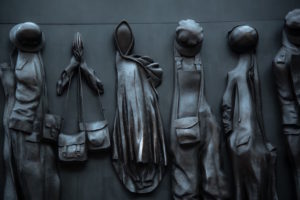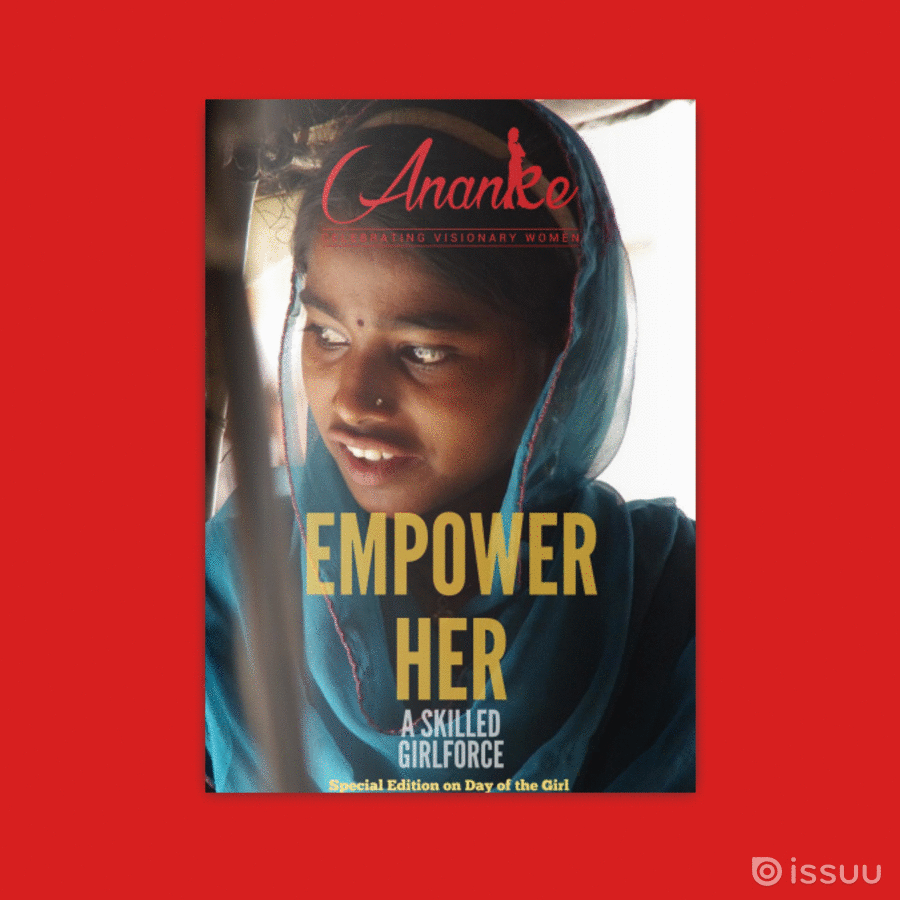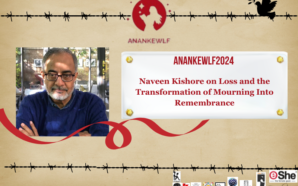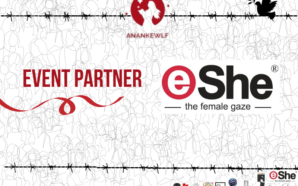In times of humanitarian crises, gender issues have often gone unnoticed and ignored. Armed conflicts and natural disasters have profoundly different impacts on women, girls, boys and men. Displacement can exacerbate already existing gender inequalities. Applying gender equality programming in times of crises is an important step towards gender equality, which is not only a human rights imperative, but a step towards achieving sustainable development. Using a gender lens, aids in greater understanding of how humanitarian crises emerge and entrench.
During times of humanitarian crises there should be no exception in achieving gender equality but the reality is that paying attention to gender issues is often ignored and viewed as irrelevant (IASC, 2006). To reiterate, man-made and natural disasters have profoundly different impacts on girls, boys, women, and men. Pre-existing gender inequalities can be exacerbated during humanitarian crises and therefore leads to increased discrimination, greater exclusion and disproportionate risks (UNICEF, 2012). The link between the role of humanitarian organisations and human rights approaches is an important one, as they are underpinned by protecting people from rights violations and are committed to ensuring that dignity is upheld and that safe spaces exist (IASC, 2006). A High-level Dialogue on International Migration and Development was convened by the UN in 2013 and the declaration recognizes that human mobility is a key factor for sustainable development (UN, 2013). The declaration stresses the protection of the rights of all migrants, regardless of their migration status and the vulnerabilities of women and children is particularly drawn to attention in the declaration (Kojima, 2015). Implementation of gender equality programming during times of crisis such as armed conflict, natural disasters is not only a human rights imperative, but striving for gender equality is a critical step towards achieving sustainable development (IASC, 2006).
Hindering women and girls’ ability to participate in community-based adaption and mitigation strategies is the result of a lack of robust decision-making power for women and girls, which exacerbates vulnerabilities and insecurities during conflict, extreme weather, droughts and floods.
Women are often susceptible to marginalisation, poverty and suffering, with existing inequalities and patterns of discrimination tending to be exacerbated during times of times of crisis (DCAF, 2005, p. 14). Crisis situations radically affect social and cultural structures, changing women’s and men’s status and thus these environments tend to exacerbate gender based discrimination and rights violations (IASC, 2006, p. 6). During humanitarian crises women and girls are at heightened risk of gender-based violence, abduction, exploitation, poverty and illness. Violence within families can be on the increase, due to breakdowns in social values as a result of displacement. The loss of the family unit and community can place women and girls at increased risk of violence (DCAF, 2005). Hindering women and girls’ ability to participate in community-based adaption and mitigation strategies is the result of a lack of robust decision-making power for women and girls, which exacerbates vulnerabilities and insecurities during conflict, extreme weather, droughts and floods (Nusseibeh, 2015). Thankfully however, issues of gender-related persecution and violence against women have been put onto the international agenda, largely thanks to diligent lobbying by feminist NGOs and transnational networks (Freedman, 2010, p. 589).
Gender Discrimination and Refugee Convention
 Problematic to humanitarian crises is that gender based discrimination is not recognised under the Refugee Convention and in refugee determination systems. It could be argued that the Refugee Convention was written from a patriarchal point of view (Ed: or without the presence of female voice), and therefore has exacerbated discriminatory practices, directed at women and girls, and that any refugee status determinations are dominated by patriarchal norms which further marginalises women and girls (DCAF, 2005). Promotion of equality in livelihoods can be lost if humanitarian interventions ignore gender equality in planning and programming and this can lead to further harm (IASC, 2006). The reality is that during times of crisis, the needs and vulnerabilities of women, girls, men and boys are profoundly different and gender analysis helps to identify these differing needs (UNWomen, 2015, p. 4). Gender roles can change over age and time, power dynamics change, women and girls bring different issues to the table, women, girls, boys and men respond differently in crisis (IASC, 2006).
Problematic to humanitarian crises is that gender based discrimination is not recognised under the Refugee Convention and in refugee determination systems. It could be argued that the Refugee Convention was written from a patriarchal point of view (Ed: or without the presence of female voice), and therefore has exacerbated discriminatory practices, directed at women and girls, and that any refugee status determinations are dominated by patriarchal norms which further marginalises women and girls (DCAF, 2005). Promotion of equality in livelihoods can be lost if humanitarian interventions ignore gender equality in planning and programming and this can lead to further harm (IASC, 2006). The reality is that during times of crisis, the needs and vulnerabilities of women, girls, men and boys are profoundly different and gender analysis helps to identify these differing needs (UNWomen, 2015, p. 4). Gender roles can change over age and time, power dynamics change, women and girls bring different issues to the table, women, girls, boys and men respond differently in crisis (IASC, 2006).
During the planning and programming process, it is imperative that women, girls, men and boys all have equal opportunity to participate in the decision making process as decisions made will ultimately affect their households and communities. Aolain argues that humanitarian emergencies are hard to predict and even harder to plan for, therefore a rigorous feminist analysis can tend to have a limited practical application on the ground (Aolain, 2011). Deep social and economic inequalities, including gender inequality, are structurally relevant to understanding how humanitarian emergencies emerge and entrench. Some examples of harmful outcomes include health services that focus primarily on the needs of women and girls, can result in fewer men seeking medical assistance through lack of understanding and dissemination, women and girls who collect water in areas that are unsafe due to poorly lit areas and isolation can be at increased risk of sexual assault and rape (UNICEF, 2012).
On Feminist Analysis on Crises & Emergencies
Looking at vulnerabilities as a frame of analysis, can underestimate the repetitiveness of human vulnerability and dependance in highly gendered ways for both men and women (Aolain, 2011). Sexual violence may be a deliberate attempt to attack the heart of a society, demoralising and dishonouring the victims in the process (DCAF, 2005). The current refugee crisis in Europe also highlights how feminist analysis is vital, when a woman’s situation is so desperate that she is forced to engage in “survival sex” to secure a male protector for her journey, that’s a feminist issue. Heavily pregnant women with malnourished children forced to walk long journeys, early marriages because it seems the best chance of survival, being detained whilst pregnant and subjected to abuse and degradation, unaccompanied children because mothers feel they have no other choice (Pankhurst, 2016). Women who head their households alone, families torn apart through the devastation of war, longing to go back to their communities once the war is over, that said whatever their circumstances they still had no choice but to adjust to an unfamiliar and often unnerving new environment. Three in five Syrian refugee women were worried for their own or their children’s security (UNHCR, 2014, p. 12). These are all issues that require gender equality programming and imperative that the use of a feminist lens and gender specific issues are considered.
The Importance of Gender Agregated Data
Key to ensuring that gender equality programming is implemented in a systematic application on the ground is to ensure appropriate data collection such as gender disaggregated data. Absent from positive humanitarian outcomes has been the absence of the collection of efficient and vigorous empirical evidence that highlights the inherent value of gender equality programming (UNWomen, 2015). Where gender markers were used in the past four years, fewer than two percent of programs coded had addressed inequalities that women and girls face. (Binetti, 2015). The lack of accurate gender disaggregated data in some cases has led to an overrepresentation of women, in an attempt to draw greater attention to their situation (Freedman, 2010). A gender marker is a coding tool that assesses whether or not a humanitarian project is designed to meet the needs of women, men, girls and boys equally, or advance gender equality in another way (Binetti, 2015). During crises, it is important to consider the key differentiators between women, girls, boys and men. Girls for example, face heightened disadvantages compared to their male peers in family roles, divisions of labor, and access to resources because they are female and young. Girls can be impacted in times of crises in devastating ways but they can also transform their communities and families in positive ways (WRC, 2014).
Inclusion VS Segregation
 Important to consider when using a gender lense in humanitarian crises is that it can tend to go one way and this can dull the critical or transformative power of gender analyses and approaches (Freedman, 2010, p. 593). Women are more than just victims in times of crisis and can in fact be agents of change, who are often an under-utilised resource in rebuilding their societies after the crisis strikes (Binetti, 2015). Too much focus on women and girls as as special or separate group, can result in further marginalisation of women and girls by targeting them as a separate group and thus essentialising their differences and overlooking the relational aspects of gender that affect both women and men (Freedman, 2010, p. 593). Effective programming, should be underpinned by the aspiration of meeting the needs of those affected by crisis and paving the way for sustainable outcomes long after International organizations have concluded their work. Communties should be left better off and continue to enjoy the benefits of interventions (Binetti, 2015).
Important to consider when using a gender lense in humanitarian crises is that it can tend to go one way and this can dull the critical or transformative power of gender analyses and approaches (Freedman, 2010, p. 593). Women are more than just victims in times of crisis and can in fact be agents of change, who are often an under-utilised resource in rebuilding their societies after the crisis strikes (Binetti, 2015). Too much focus on women and girls as as special or separate group, can result in further marginalisation of women and girls by targeting them as a separate group and thus essentialising their differences and overlooking the relational aspects of gender that affect both women and men (Freedman, 2010, p. 593). Effective programming, should be underpinned by the aspiration of meeting the needs of those affected by crisis and paving the way for sustainable outcomes long after International organizations have concluded their work. Communties should be left better off and continue to enjoy the benefits of interventions (Binetti, 2015).
Gender Equality Programming & Women’s Voice
Importantly, achieving gender equality is a human rights imperative and taking a gender perspective in policies, programs and operations is in fact an important aspect of protection responsibilites. In the spirit of the relevant bodies of law including human rights, humanitarian and refugee law, we must resist discrimination of any kind (IASC, 2006). First and foremost, protection is utimately the responsibility of the state, however human rights and humanitarian actors also have a responsibility to ensure that the rights of women and girls are protected in accordance with the relevant bodies of law. Gender equality programming works to give women greater voice, both as providers and beneficiaries of humanitarian action (UNWomen, 2015). IASC explains that gender equality programming’s main goal is to ensure that the human rights of women, girls, boys and men are equally promoted and protected and that gender equality is achieved (IASC, 2006).
Implementation of gender equality programming as a standard part of humanitarian and human rights thinking involves ensuring that one or more gender experts are deployed in the emergency situation, the establishment of gender networks, the collection of gender disaggregated data as a routine part of reporting, a gender action plan (IASC, 2006). Studies have shown that gender equality programming contributes to improving access to and use of services, increasing the effectiveness of humanitarian outcomes and reducing gender inequalities (UNWomen, 2015). Gender equality programming should extend to Western nations that take refugees insomuch as that women that have sought asylum in Western states have expressed that their specifically gendered experiences were not taken into account by decision makers and judges (Freedman, 2010). Other examples of gender equality programming include, leadership and mentorship programs that will benefit both girls and communities, holistic approaches, targeting the most marginalised girls to ensure that programs are equitable and make the most impact (WRC, 2014). Designing programs based on women’s and men’s knowledge, skills and livelihoods ensures equal access for all (IASC, 2006).
Considerations
Without consideration of gender equality programming in times of humanitarian crises, women and girls will continue to face violations of their rights and remain marginalised. For example, Rohingya women and girls fleeing from intensified mass violence and increased risk of sexual violence targeting Muslim communities in Rakhine state have become victims of human trafficking for forced marriage in a thriving industry. They can be tricked by traffickers into believing that life will be better in Malaysia or Indonesia because they are Muslim countries, only to end up being held in captivity. Prostitution and forced marriage becomes a living reality for these women and girls (Kojima, 2015). Or Reema, a Syrian refugee woman living in Lebanon whom is subjected to frequent verbal harassment from men in the neighbourhood (UNHCR, 2014). Everyone working in this field must ensure women and girls are given opportunities and ensure their voices are heard. Simply trying to shelter, cloth and feed these women and their children is simply not enough.
This paper has examined the importance of using gender equality programming in times of crises. Relevant bodies of law articulate that we must resist all forms of discrimination. Human rights and humanitarians have a duty of care to ensure the protection of the rights of women and girls. The Refugee Convention was written under the auspices of patriarchy, therefore ignoring the situations, interests and needs of women and girls. Gender equality programming in times of crises helps to ensure that needs of women, girls, boys and men are considered and that achieving gender equality is achieved.
This article was originally written for Curtin Center for Human Rights Education – Perth Western Australia
References
Aolain, F. N., 2011. Women, Vulnerability, and Humanitarian Emergencies. Michigan Journal of Gender and Law, 18(1), pp. 1-23.
Binetti, A., 2015. Emerging Humanitarian Frontiers. [Online]
Available at: http://blog.giwps.georgetown.edu/emerging-humanitarian-frontiers/
[Accessed 5 April 2017].
DCAF, 2005. Women In an Insecure World:Violence Against Women Facts, Figures and Analysis, Geneva: Geneva Centre for the Democratic Control of Armed Forces .
Freedman, J., 2010. Mainstreaming Gender in Refugee Protection. Cambridge Review of International Affairs, 23(4), pp. 589-607.
IASC, 2006. Women, Girls, Boys and Men Different Needs Equal Opportunites:Gender Handbook in Humanitarian Action. Geneva: IASC.
Kojima, Y., 2015. Rohingya Women in Migration: Lost Voices. [Online]
Available at: https://ourworld.unu.edu/en/rohingya-women-in-migration-lost-voices
[Accessed 5 April 2017].
Nusseibeh, L., 2015. The United Arab Emirates Series on Women Peace and Security. New York: Permanent Mission of the United Arab Emirates to the United Nations.
Pankhurst, H., 2016. The refugee crisis is a feminist issue. We can’t just sit by and watch. [Online]
Available at: https://www.theguardian.com/commentisfree/2016/sep/19/refugee-crisis-feminist-issue-womens-suffering
[Accessed 5 April 2017].
UN, 2013. Declaration of the High-level Dialogue on International Migration. [Online]
Available at: http://www.un.org/ga/search/view_doc.asp?symbol=A/68/L.5
[Accessed 5 April 2017].
UNHCR, 2014. Woman Alone:The Fight for Survival by Syria’s Refugee Women, Geneva: UNHCR.
UNICEF, 2012. Gender Equality in Humanitarian Action, New York: UNICEF.
UNWomen, 2015. The Effect of Gender Equality Programming on Humanitarian Outcomes, New York: Humanitarian Unit UN Women.
WRC, 2014. Strong Girls, Powerful Women: Program Planning and Design for Adolescent Girls, New York: Women’s Refugee Commission.











